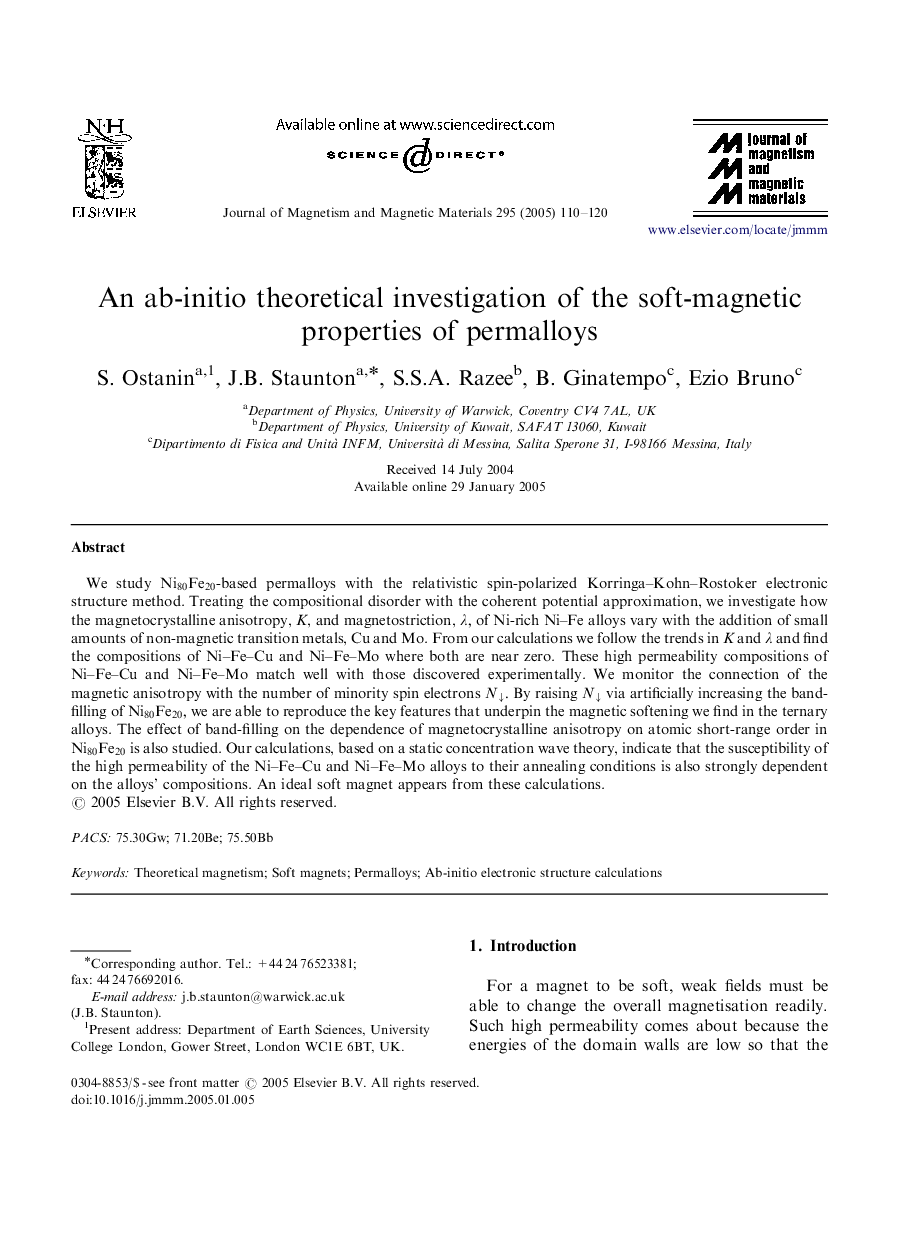| Article ID | Journal | Published Year | Pages | File Type |
|---|---|---|---|---|
| 10710224 | Journal of Magnetism and Magnetic Materials | 2005 | 11 Pages |
Abstract
We study Ni80Fe20-based permalloys with the relativistic spin-polarized Korringa-Kohn-Rostoker electronic structure method. Treating the compositional disorder with the coherent potential approximation, we investigate how the magnetocrystalline anisotropy, K, and magnetostriction, λ, of Ni-rich Ni-Fe alloys vary with the addition of small amounts of non-magnetic transition metals, Cu and Mo. From our calculations we follow the trends in K and λ and find the compositions of Ni-Fe-Cu and Ni-Fe-Mo where both are near zero. These high permeability compositions of Ni-Fe-Cu and Ni-Fe-Mo match well with those discovered experimentally. We monitor the connection of the magnetic anisotropy with the number of minority spin electrons Nâ. By raising Nâ via artificially increasing the band-filling of Ni80Fe20, we are able to reproduce the key features that underpin the magnetic softening we find in the ternary alloys. The effect of band-filling on the dependence of magnetocrystalline anisotropy on atomic short-range order in Ni80Fe20 is also studied. Our calculations, based on a static concentration wave theory, indicate that the susceptibility of the high permeability of the Ni-Fe-Cu and Ni-Fe-Mo alloys to their annealing conditions is also strongly dependent on the alloys' compositions. An ideal soft magnet appears from these calculations.
Related Topics
Physical Sciences and Engineering
Physics and Astronomy
Condensed Matter Physics
Authors
S. Ostanin, J.B. Staunton, S.S.A. Razee, B. Ginatempo, Ezio Bruno,
